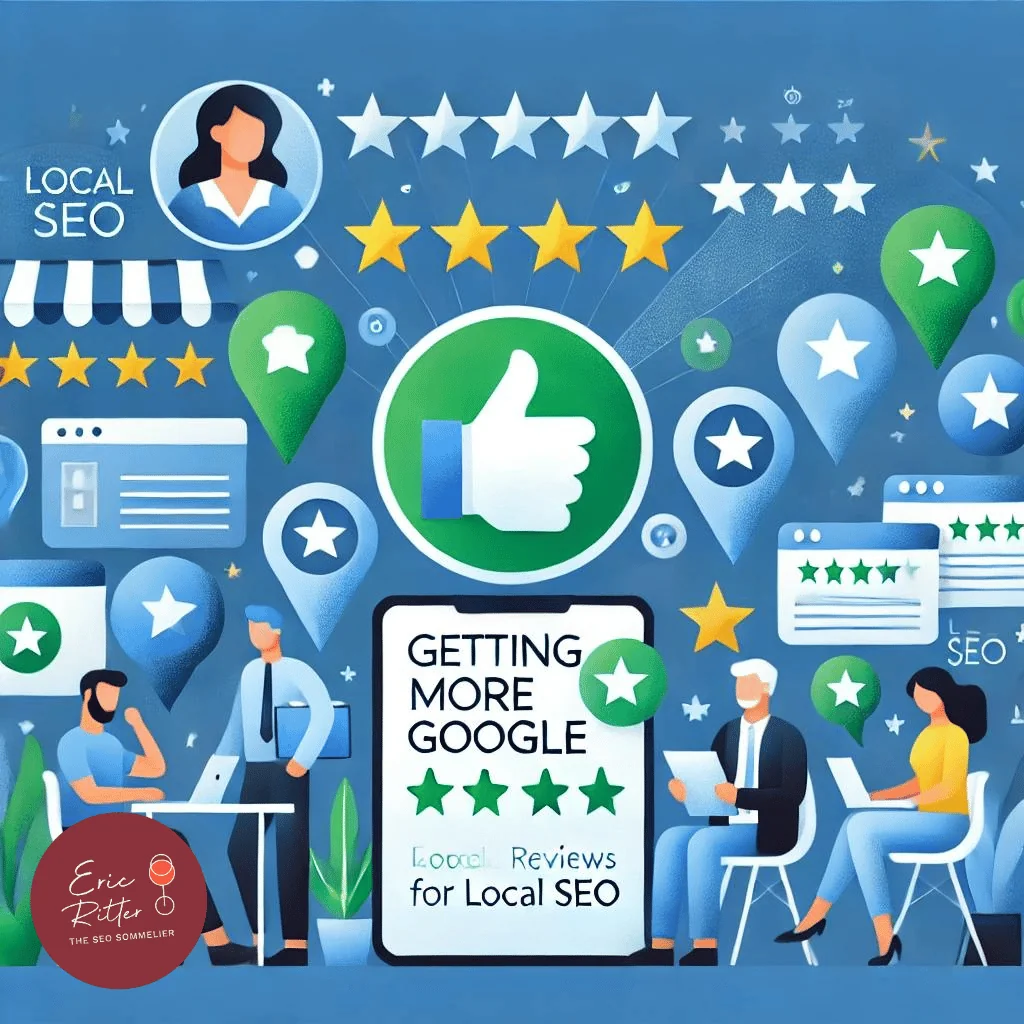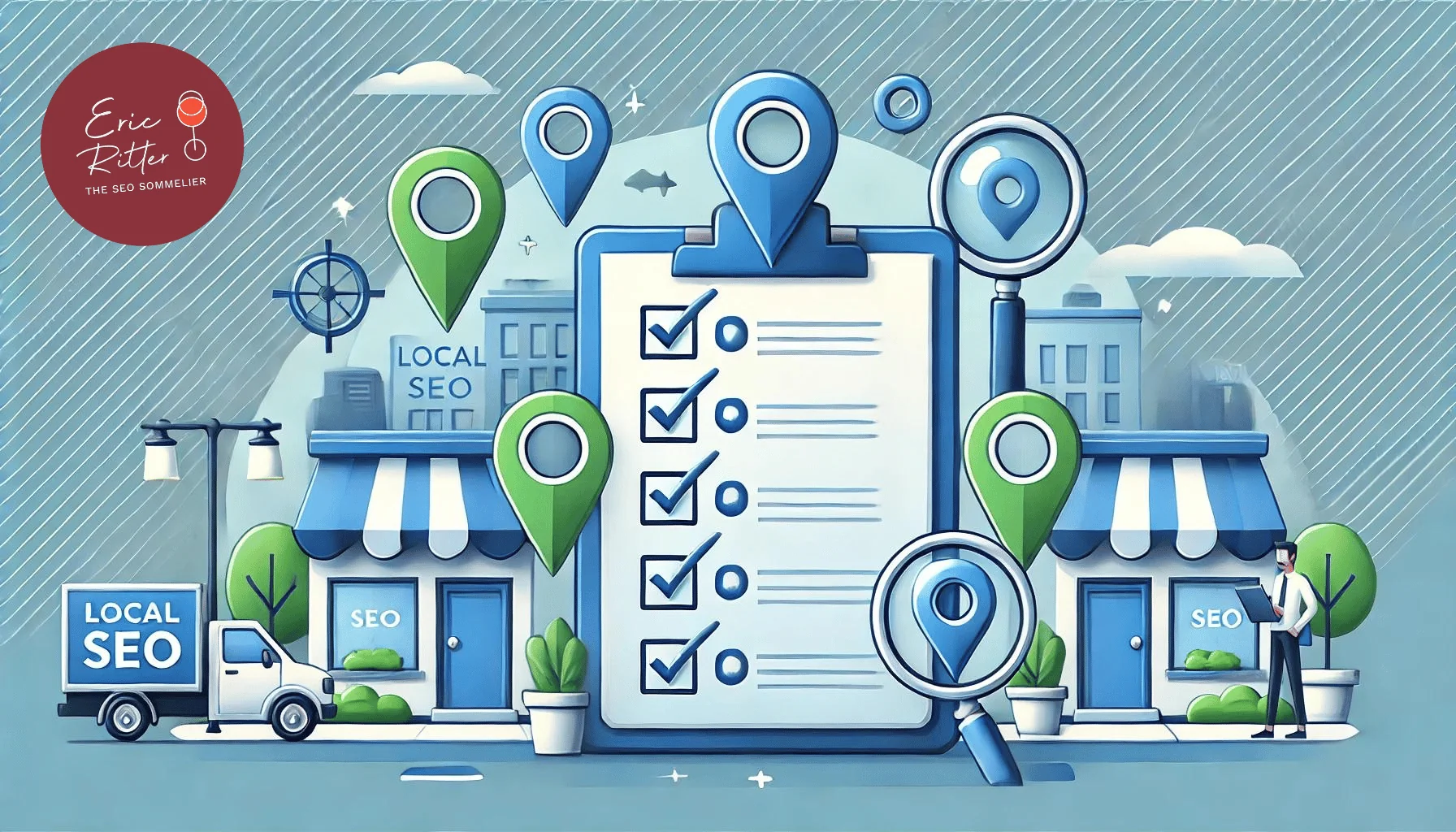Why Local SEO is a Game Changer
Imagine this: You’re searching for a coffee shop nearby, a plumber for an emergency fix, or even the best marketing agency in town. What do you do? You pull out your phone, type in a quick search, and instantly see the top businesses near you. That’s the power of Local SEO in action. If your business isn’t showing up in those search results, you’re missing out on a ton of potential customers. But don’t worry – this Local SEO Checklist is here to change that.
In this guide, I’m sharing the exact steps you need to take to dominate local search results and get your business in front of more customers. Whether you’re a business owner or a marketing director at a big brand, this guide is designed to give you practical, easy-to-follow tips that will make a difference. Let’s dive in and make sure your business gets found.

Why Local SEO Matters
Local SEO isn’t just about getting found online – it’s about growing your business by connecting with the right people in your area. Here’s the deal: 46% of all Google searches are looking for local information, and 88% of people who do a local search on their smartphone visit a related store within a week. These are not numbers to ignore. With more people using voice search, mobile devices, and Google Maps to find what they need, having a rock-solid Local SEO strategy is non-negotiable.
Local SEO helps you:
- Stand out in Google’s Local Pack (the top 3 results on Google Maps)
- Attract more foot traffic to your store
- Build trust and credibility with customer reviews
- Drive high-quality leads that are ready to convert
This guide breaks down the steps to make sure your business is front and center when people are searching in your area. Whether you’re managing one location or fifty, you’ll find valuable tips to boost your visibility and customer base.
What You’ll Find in This Checklist
This isn’t just another SEO guide – it’s a strategic roadmap to make sure you’re covering all your bases. We’ll walk through each key element of Local SEO, giving you actionable steps, industry trends, and pro tips that can take your strategy to the next level.
Here’s what you’ll learn:
- Google Business Profile (GBP) Optimization: Tips to maximize your Google presence.
- Website Structure & Optimization: How to make your website more visible and relevant in local searches.
- Citations and Local Links: Why consistency and quality backlinks matter more than ever.
- Get More Google Reviews: The power of customer feedback in boosting your rankings.
- Reporting and Monitoring: How to measure and adjust your efforts for long-term success.
Plus, we’ll dive into:
- Industry Trends in Local SEO: What’s new and what’s coming next.
- Special Considerations for Multi-Location Businesses: Tips for managing Local SEO at scale.
How to Use This Local SEO Checklist
This guide is designed to be practical and straightforward. Here’s how you can get the most out of it:
- Read through each section and identify areas where your business could improve.
- Follow the action steps provided – they’re easy to implement and designed for results.
- Take note of the pro tips – these are insights that aren’t always shared but can give you a competitive edge.
- Download the full guide to have everything at your fingertips.
Whether you’re just getting started with Local SEO or looking to refine your strategy, this checklist is your go-to resource.
Your Essential Local SEO Checklist
Let’s get into the nitty-gritty. Here’s your go-to checklist for improving your Local SEO. Each section is packed with actionable steps that you can implement right away. We’ll also sprinkle in some pro tips to give you that competitive edge.
1. Google Business Profile (GBP) Optimization

Your Google Business Profile (formerly Google My Business) is the foundation of your Local SEO efforts. It’s the first thing people see when they search for your business, and it plays a massive role in whether or not you show up in the coveted Google Maps pack.
Action Steps:
- Claim and Verify Your Profile: This is step one. Make sure your GBP is claimed and verified, so you have full control over the information displayed.
- Optimize Business Information: Keep your NAP (Name, Address, Phone) consistent across all platforms.
- Add Service Areas and Categories: Clearly define the areas you serve and select relevant business categories.
- Use High-Quality Images: Professional photos can make a big difference in attracting clicks.
- Utilize Google Posts: Regularly post updates, offers, and events to engage with potential customers.
Pro Tip: Add keywords naturally to your business name, description, and services section. This can help you rank for local searches related to your offerings without keyword stuffing.
2. Website Structure & Optimization for Local SEO

A strong website structure with Local SEO elements is key to improving your visibility. Your website needs to be optimized for both users and search engines, with local schema markup helping Google understand your business better.
Action Steps:
- Optimize Title Tags and Meta Descriptions: Include location-based keywords naturally in these elements.
- Use Local Schema Markup: Implement schema markup to provide search engines with detailed information about your business.
- Create Location-Specific Pages: If you serve multiple areas, create separate pages targeting each location.
- Ensure Mobile-Friendliness: Your site should be responsive and offer a great experience on all devices.
- Improve Page Load Speed: Use tools like Google PageSpeed Insights to keep your site loading fast.
Pro Tip: Use the appropriate schema for your business type. For example, if you’re a law firm, make sure you use “legalService” schema. Adding “FAQ schema” on relevant pages can also help you get featured in rich snippets.
3. Citations and Local Links

Consistency is key when it comes to citations and local links. Having accurate citations across multiple directories and acquiring quality local backlinks will build your business’s credibility and trust with search engines.
Action Steps:
- Consistent NAP Across Directories: Make sure your business’s NAP information is consistent on all directories.
- List Your Business on Local Directories: Submit your business details to reputable directories like Yelp, Yellow Pages, and industry-specific listings.
- Get Links from Local Publications: Reach out to local newspapers, blogs, and community websites for link opportunities.
- Join Local Business Associations: Many of these offer a backlink as part of your membership.
- Monitor and Update Citations Regularly: Ensure all citations remain accurate, even as your business evolves.
Pro Tip: Getting listed in locally and industry-relevant directories is vital. While these niche directories might not seem flashy, they carry significant weight with search engines and build credibility in your community. Quality over quantity always wins here.
4. Get More Google Reviews for Local SEO

Positive reviews are powerful social proof that can boost your local rankings and attract more customers. The quantity, quality, and frequency of reviews all play a role in your search visibility.
Action Steps:
- Ask for Reviews Proactively: Make it easy for happy customers to leave reviews by providing them with a direct link.
- Respond to All Reviews: Engage with your reviewers, both positive and negative, to show you value their feedback.
- Incorporate Keywords in Responses: Include relevant keywords naturally when responding to reviews, but don’t overdo it.
- Run a Review Campaign: Periodically encourage customers to leave reviews through emails or promotions.
- Showcase Reviews on Your Website: Display positive reviews on your website to build trust.
Pro Tip: Request reviews from potential clients who weren’t the right fit but had a good experience. For example, if you provided a helpful referral or advised them that their case might not be worth pursuing, they might still appreciate your honesty and professionalism. Encourage them to leave a review highlighting the positive aspects of their experience.
5. Local SEO Reporting and Monitoring

To truly understand the impact of your Local SEO efforts, you need to track your progress. Consistent reporting helps you identify what’s working, what needs tweaking, and where you can double down for better results.
Action Steps:
- Track Google Business Profile Insights: Monitor metrics like search views, actions taken, and direction requests.
- Use Google Analytics for Local Traffic: Segment traffic by location to see how well you’re attracting local visitors.
- Monitor Local Rankings: Use tools like BrightLocal or Moz to track your rankings for local keywords over time.
- Analyze Citation Consistency: Regularly audit your citations to ensure NAP information remains consistent.
- Set Up Goals in Google Analytics: Track conversions such as form submissions, calls, or store visits generated from local searches.
Pro Tip: Keep an eye on competitors by tracking their reviews, citations, and rankings. This can reveal gaps in your strategy and opportunities to outperform them.
Industry Trends in Local SEO
Local SEO is constantly evolving, and staying ahead of the curve is essential. Here are some trends to watch:
- Voice Search is Growing: With more people using voice assistants, optimizing for conversational queries and natural language is critical.
- Zero-Click Searches Are Here to Stay: Featured snippets and Google’s Local Pack often provide answers directly on the search results page, reducing the need for users to click through. Make sure your content is optimized for these formats.
- AI and Machine Learning: Search engines are getting smarter, so your content needs to be more relevant and user-focused than ever. Focus on user intent and providing clear, valuable information.
Special Considerations for Multi-Location Businesses
Managing multiple locations on Google Maps comes with unique challenges, but it also opens up opportunities. Here’s how to approach Local SEO when you have more than one location:
- Create a Dedicated Page for Each Location: Each page should have unique content, including the location’s address, contact information, and services offered.
- Use Location-Based Keywords: Optimize each location page with local keywords specific to that area.
- Implement Multi-Location Schema Markup: Help search engines understand the structure of your business by adding local schema markup to each location page.
- Manage Google Business Profiles for Each Location: Ensure that each location has its own GBP listing with accurate information.
- Localize Content and Reviews: Showcase reviews specific to each location and tailor content to reflect the community’s needs.
Why This Checklist Is Your Secret Weapon
By following this Local SEO Checklist, you’ll be able to position your business in front of the right customers at the right time. Whether you’re a small business owner or managing a large brand with multiple locations, these steps will help you build a strong local presence, attract more customers, and ultimately grow your business.

Download Your Local SEO Guide
Ready to dive deeper and get step-by-step instructions for each of these strategies? Download the complete Local SEO Checklist guide here and get all the details you need to optimize your business for local search. Don’t miss out – this guide is packed with insights, pro tips, and actionable advice that can take your local marketing to the next level.



